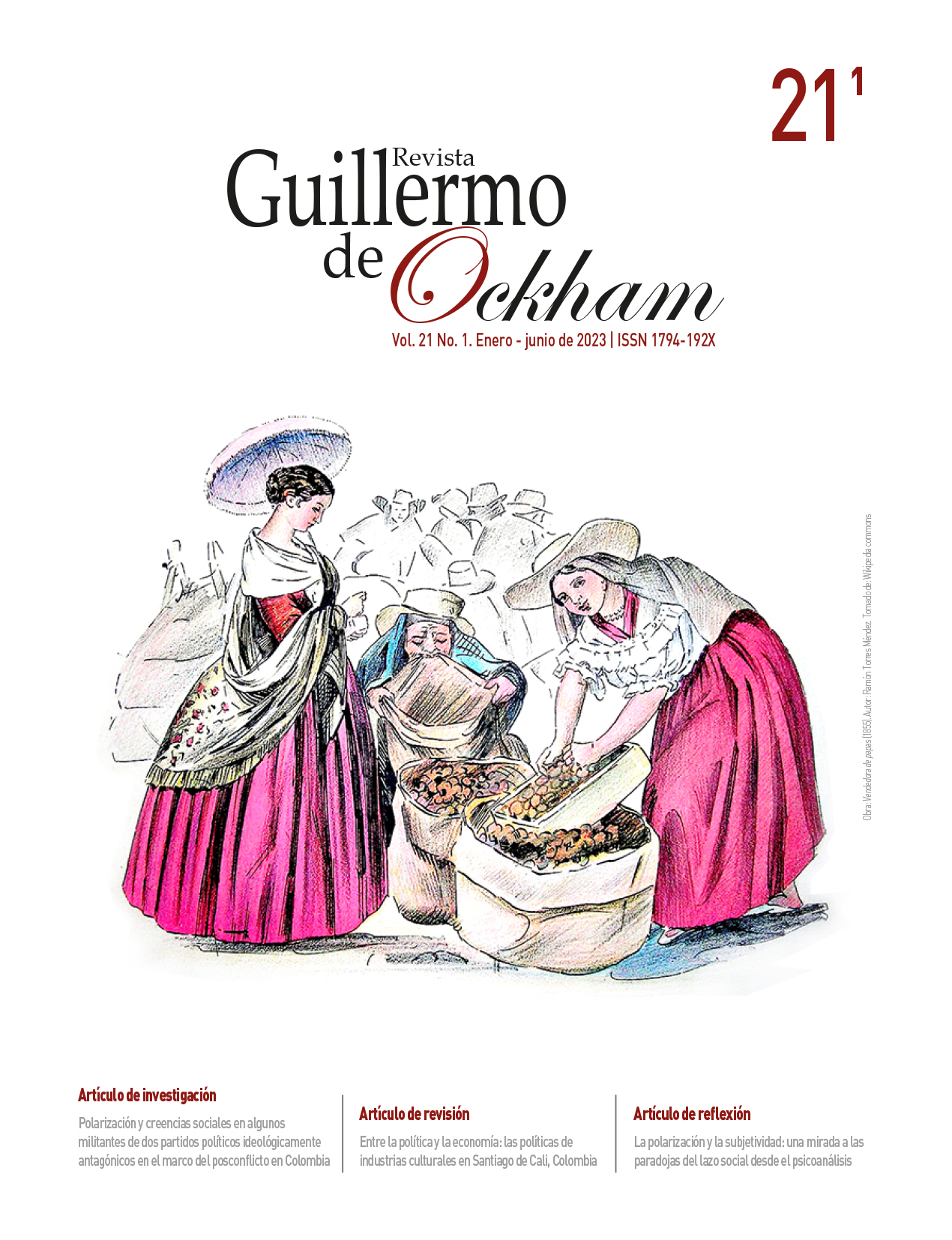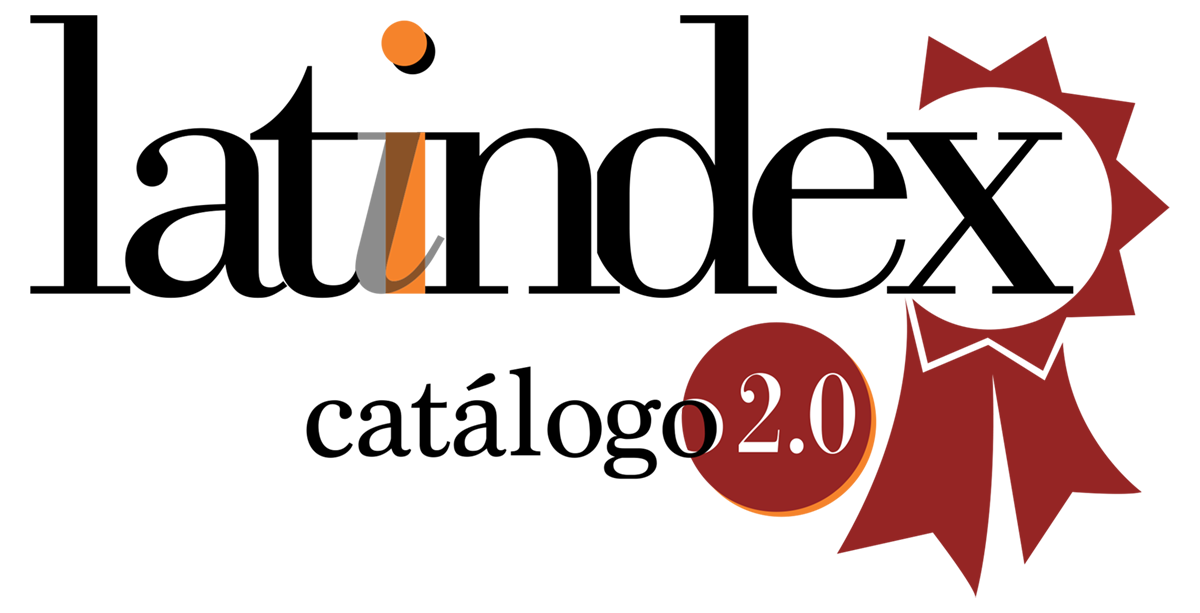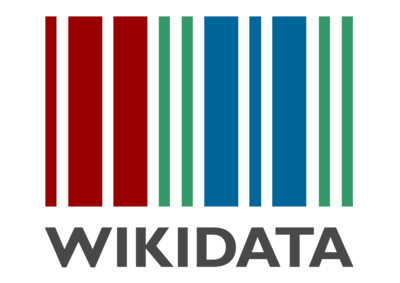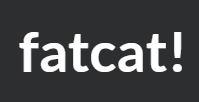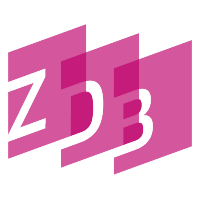The Revista Guillermo de Ockham provides an immediate and open access to its content, based on the principle of offering the public a free access to investigations to provide a global interchange of knowledge.
Unless otherwise established, the contents of this journal has a license with Creative Commons Attribution-NonCommercial-NoDerivatives 4.0 International (CC BY-NC-ND 4.0) http://creativecommons.org/licenses/by-nc-nd/4.0/
- Attribution: You must give appropriate credit, provide a link to the license, and indicate if changes were made. You may do so in any reasonable manner, but not in any way that suggests the licensor endorses you or your use.
- NonCommercial: You may not use the material for commercial purposes.
- NoDerivatives: If you remix, transform, or build upon the material, you may not distribute the modified material.
- No additional restrictions: You may not apply legal terms or technological measures that legally restrict others from doing anything the license permits.
Abstract
This research article synthesizes a study that allows to identify, at present and from the evolution of the legal system, advances, challenges and problems that still persist in terms of attention to diversity, however, there are actions, languages, meanings, that hinder the construction of inclusive education scenarios for the bet of a human development from the potentialities and not from the deficit. For this reason, the question is posed: What is the influence of prosociality from a diversity perspective in inclusive education? The general objective is to identify the different reflections that emerged from the children about prosociality and its influence on inclusive education in the educational institution of the city of Pereira. The research was developed as a qualitative study of hermeneutic and comprehensive cut, in which the technique of the laboratory of vital experiences was used, using instruments such as interviews, field diary and questionnaires. In order to identify the acceptance of the other as a fundamental characteristic to understand inclusion in the classroom, and how is the recognition before and after entering an inclusive institution. It is concluded with the need to enhance recognition and acceptance, being an inherent condition to human beings, strengthening the right to be different, accepted, respected by their social and educational environment, aspects that strengthen prosociality and that enhance in educational environments the commitment to care from diversity.
Keywords:
References
Blanco, R. (2008). Marco conceptual sobre la educación inclusiva. En La educación inclusiva: el camino hacia el futuro (pp. 5-14). Unesco. http://www.ibe.unesco.org/fileadmin/user_upload/Policy_Dialogue/48th_ICE/CONFINTED_48_Inf_2__Spanish.pdf
Booth, T., Ainscow, M., Black-Hawkins, K., Vaughan, M., y Shaw, L. (2002). Índice de inclusión: desarrollando el aprendizaje y la participación en las escuelas. Mark Vaughan.
Caprara, G. V., Steca, P., Zelli, A., y Capanna, C. (2005). A new scale for measuring adults’ prosocialness. European Journal of Psychological Assessment, 21(2), 77-89. https://doi.org/10.1027/1015-5759.21.2.77
Cárdenas, B. E., y Aguilar, M. R. (2015). Respeto a la diversidad para prevenir la discriminación en las escuelas. Ra Ximhai, 11(1), 169-186. http://www.redalyc.org/articulo.oa?id=46139401009
Cero Cuatro. (2019, 5 agosto). Hacia la educación inclusiva, aprendizaje entre pares. Numik. https://www.numikapp.com/2019/08/05/hacia-la-educacion-inclusiva-aprendizaje-entre-pares/
Delors, J. (1994). “Los cuatro pilares de la educación” en La educación encierra un tesoro. En Informe a la Unesco de la Comisión Internacional sobre la Educación para el siglo XXI (pp. 91-103). Unesco.
Divulgación Dinámica. (2016, 28 de diciembre). De la integración social a la educación inclusiva. https://www.divulgaciondinamica.es/blog/la-integracion-social-la-educacion-inclusiva/
Espinosa Antón, F. J. (2018). Los individuos en la multitud. Co-herencia, 15(28), 183-207. https://doi.org/10.17230/co-herencia.15.28.8
Garaigordobil, M. (2014). Conducta prosocial: el papel de la cultura, la familia, la escuela y la personalidad. Revista Mexicana de Investigación en Psicología, 6(2), 146-157. https://revistamexicanadeinvestigacionenpsicologia.com/index.php/RMIP/article/view/19
Hardt, M., y Negri, A. (2000). El imperio. Ediciones la Cueva.
Hardt, M., y Negri, A. (2004). Multitud: guerra y democracia en el imperio. Debate.
Honneth, A. (1992). La lucha por el reconocimiento: por una gramática moral de los conflictos. Crítica.
Loaiza Rendón, C. A. (2011). La cultura de la diversidad: el telón de fondo de la inclusión en la educación de, con y para todos. Plumilla Educativa, 8(1), 166-175. https://doi.org/10.30554/plumillaedu.8.490.2011
Moñivas, A. (1996). La conducta prosocial. Cuadernos de trabajo social, (9), 125-142. https://revistas.ucm.es/index.php/CUTS/article/view/CUTS9696110125A
Ocampo, A. (2018). Educación inclusiva: una teoría sin disciplina. Legados y recuperación de los saberes diaspóricos para una epistemología heterotópica. En J. Asenjo, Ó. Macías, P. Ávalo y Y. Yucra, I Congreso Iberoamericano de Docente (pp. 3-42). Red Iberoamericana de Docentes; UCA; Formación IB.
Opertti, R. (2008). El camino del futuro: un desafío para compartir. Unesco. http://www.ibe.Unesco.org/fileadmin/user_upload/COPs/News_documents/2007/0710PanamaCity/Documento_Inclusion_Educativa.pdf
Presidencia de la República de Colombia. (2015, 26 de mayo). Decreto 1075 de 2015 [Por medio del cual se expide el Decreto Único Reglamentario del Sector Educación]. https://www.suin-juriscol.gov.co/viewDocument.asp?ruta=Decretos/30019930
Presidencia de la República de Colombia. (2017, 29 de agosto). Decreto 1421 de 2017 [Por el cual se reglamenta en el marco de la educación inclusiva la atención educativa a la población con discapacidad]. https://www.suin-juriscol.gov.co/viewDocument.asp?ruta=Decretos/30033428
Rawls, J. (1971). A theory of justice. Harvard University Press.
Roche, R. (1995). Psicología y educación para la prosocialidad. Universitat Autònoma de Barcelona.
Sen, A. (2000). Desarrollo y libertad. Planeta.
Skliar, C. (2015). Preguntar la diferencia: cuestiones sobre la inclusión. Sophia, 11(1), 33-43. http://www.redalyc.org/articulo.oa?id=413740751004
Solís, P. (Director). (2013). Cuerdas [Cortometraje]. La Fiesta PC.
Torres, D. (2016, 3 de marzo). Iguales [Video]. YouTube. https://youtu.be/XnuuvDT2xxY
Unesco. (1960, 14 de diciembre). Convención relativa a la lucha contra las discriminaciones en la esfera de la enseñanza. Instrumentos Normativos de la Unesco. http://portal.Unesco.org/es/ev.php-URL_ID=12949&URL_DO=DO_TOPIC&URL_SECTION=201.html
Unesco. (2001, 2 de noviembre). Declaración Universal de la Unesco sobre la Diversidad Cultural. http://portal.Unesco.org/es/ev.php-URL_ID=13179&URL_DO=DO_TOPIC&URL_SECTION=201.html
Universidad Internacional de Valencia. (2022, 25 de abril). Características y buenas prácticas para la educación inclusiva. https://www.universidadviu.com/es/actualidad/nuestros-expertos/caracteristicas-y-buenas-practicas-para-la-educacion-inclusiva
Zuluaga-Lotero, A. M., Arias-Gallo, L. M., y Montoya, M. (2016). Proyecto Mosqueteros: una propuesta de intervención en el aula para favorecer los procesos de inclusión escolar. Pensamiento Psicológico, 14(1), 77-88. http://www.redalyc.org/articulo.oa?id=80144041006


